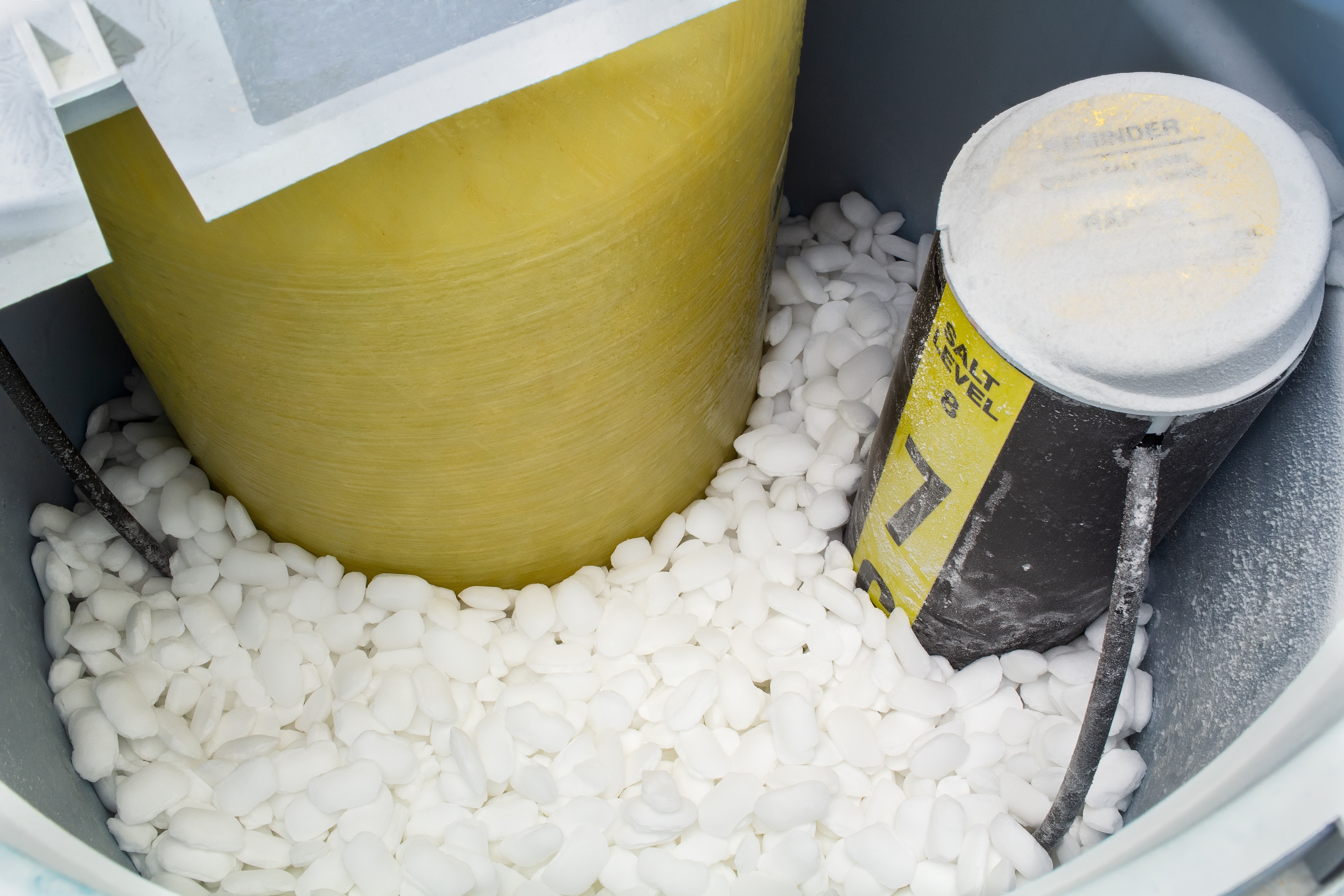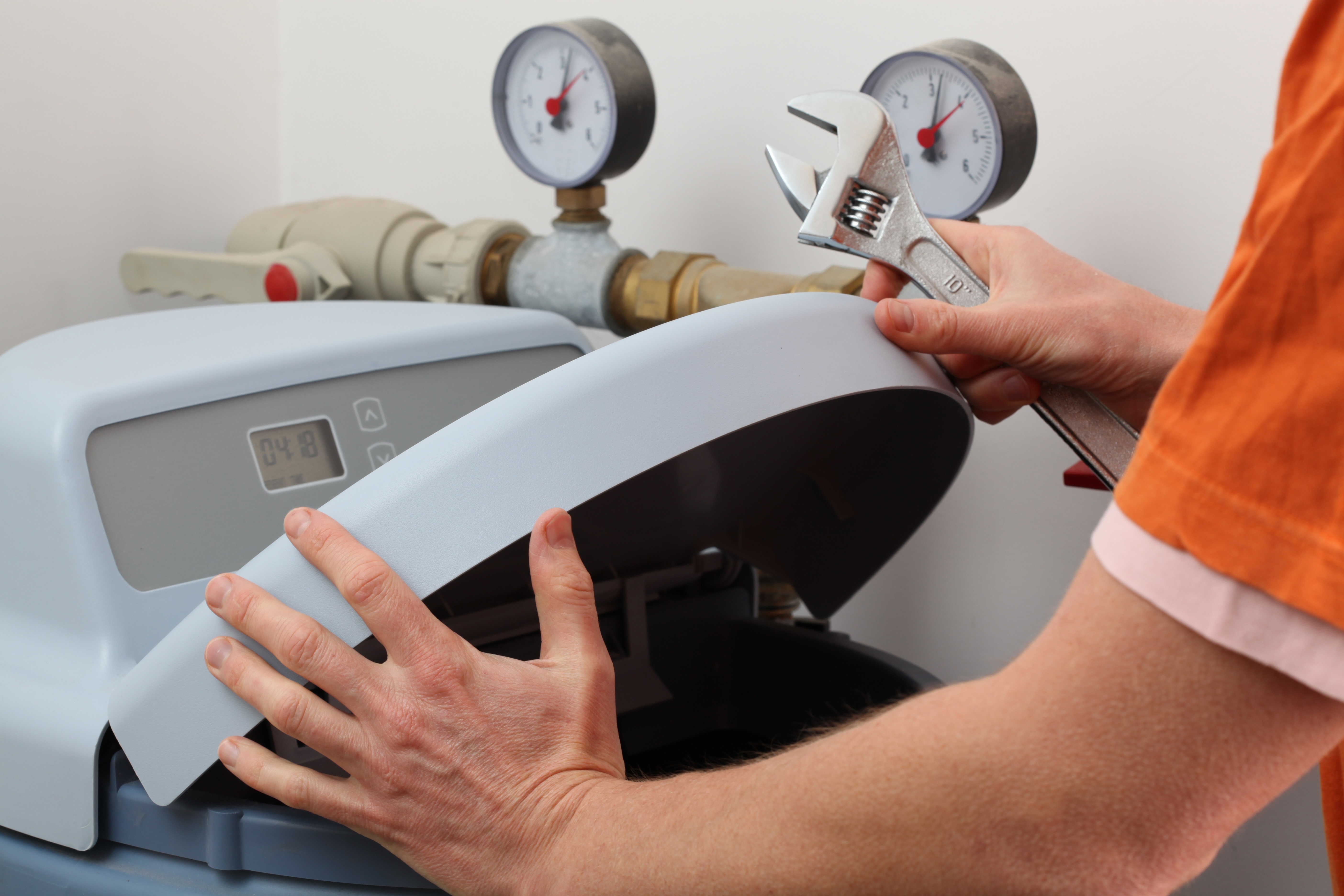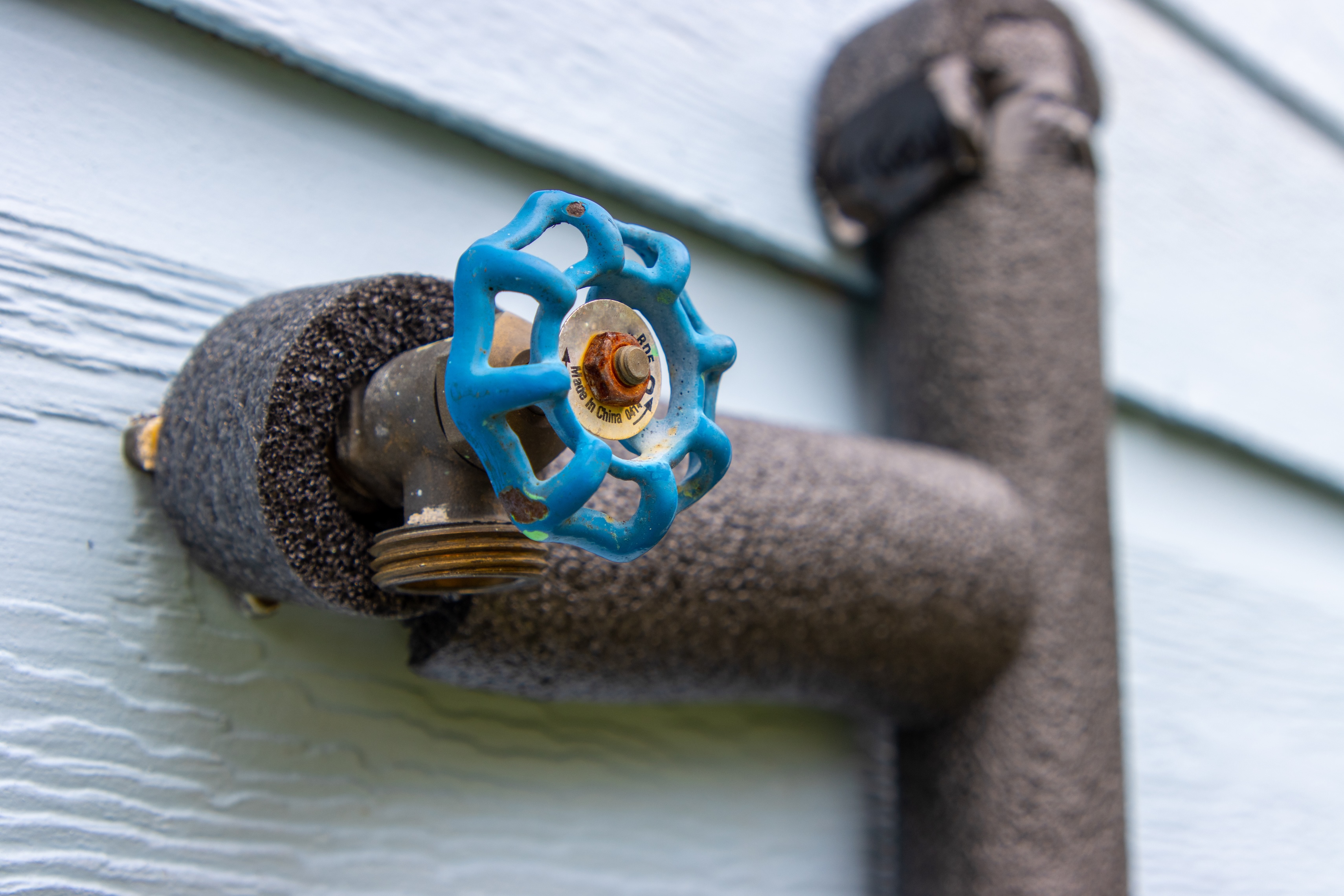Why Midwest Homes Need Water Softener Salt Pellets Before Winter
Learn how water softener salt pellets protect Midwest homes in winter. Tips on maintenance, salt types, and preventing freeze damage.

Water softener salt pellets keep your home’s water system working properly by removing hardness minerals like calcium and magnesium. In areas across the Midwest, where winters are harsh and water is typically very mineral-rich, keeping salt levels steady is essential. Cities like Minneapolis often deal with water hardness above 15 grains per gallon. Cold weather puts added strain on your system, which means preparing now can prevent winter damage later.
Below, we’ll explain what to watch for and how to prepare your softener before the first freeze.
How Salt Pellets Keep Hard Water in Check
Salt pellets play a key role in how your water softener removes minerals like calcium and magnesium, which are two of the main reasons for hard water. Inside the system, these pellets dissolve in water to create a salty solution called brine. During regeneration, this brine flows through a resin bed and flushes out the trapped minerals. Without enough salt, the system can’t recharge itself correctly. That’s why keeping a steady supply of pellets in the brine tank is necessary for soft water the entire year.
Do water softeners prevent calcium buildup? Yes. Water softeners remove calcium and magnesium, the minerals that cause hard water. This helps prevent scale buildup in pipes, appliances, and fixtures, keeping everything running more efficiently and lasting longer.
How Your Softener Uses Salt Behind the Scenes
Your water softener has a tank filled with resin beads that grab onto minerals when water flows through. However, over time, those beads need to be cleaned. That’s where salt comes in. The system pulls salty water from the brine tank to rinse the beads during a cycle called regeneration. If the salt level drops too low, the softener won’t work well. Keeping the salt level where it needs to be means the system can do its job, and it gives you softer water with fewer spots and less buildup.
Why Winter is Tough on Water Softeners
Cold weather changes how your water softener works. When temperatures drop and water use increases, your system works harder. Below, we’ll explain why winter strains your water softener and what that means for your salt supply and performance.
Related Article: Winter Home Maintenance Checklist Make sure your home is ready for freezing temps with this seasonal checklist. It covers plumbing, insulation, and heating tips to help you stay safe and avoid costly repairs all winter long.
More Water Use Means More Salt

In the winter, people typically use more water. You’ve got holiday guests, extra laundry, more cooking, and everyone spending more time indoors. All of that puts additional pressure on your softener. More water flowing through the system means more salt gets used to keep everything running correctly. If you’re not checking the tank often, you could run low without realizing it. You’ll want to keep an eye on levels more often during the colder months, particularly when your household is busier than usual.
Cold Temperatures Slow Things Down
When temperatures drop, your water softener won’t work as fast. Cold water makes the brine solution thicker and slows down the regeneration cycle. In very low temperatures, parts of the system, especially those in unheated areas, even start to freeze. This lowers performance and impacts how well minerals are removed. Cold water can actually reduce a softener’s effectiveness by 30-40%, with ion exchange slowing down about 25% for every 18°F drop in water temperature. If your softener is in a basement, garage, or crawlspace, it’s best to insulate it now.
Signs Your Water Softener Needs Attention Before the First Freeze

Before winter arrives, it’s a good idea to check your water softener for any signs that it might need service. If you’ve noticed dry skin, soap that doesn’t lather well, cloudy laundry, or water spots on dishes, your softener probably isn’t working right. Other warning signs include slow water flow or strange noises during regeneration. These point to buildup or worn parts. Now’s the time to inspect your unit for salt bridges, cracks, or leaks.
If anything looks off, consider scheduling a water softener service before the first hard freeze.
How can you tell if your water softener is using too much salt? If you're refilling salt more often than usual or see crusty buildup around the tank, your system might be using too much. Other signs include salt mushing, salt bridges, or water that still feels hard. Check your softener’s settings and consider having it serviced if the problem continues.
How Cold Weather Can Damage Your Water Softener System
Freezing temperatures make your water softener work harder, but they cause physical damage, too. This is especially true for systems in garages or basements that don’t stay warm. Below, we’ll explain the main types of cold-weather damage and how they affect your water softener system.
Risks of Frozen Brine Tanks and Lines
When water in your softener freezes, it expands and cracks the brine tank or causes pipes to burst. This damage leaves your softener out of use and might take time and money to fix. Outdoor or unheated indoor setups are at more risk, particularly when they’re not insulated. Water softener repairs can cost an average of $551, with most falling between $161 and $975. However, major damage can cost up to $2,500. Keeping the system in a temperature-controlled space or adding insulation prevents these problems.
Mineral Buildup from Interrupted Cycles
If freezing or cold conditions interrupt the regeneration cycle, your softener won’t flush out hardness minerals like it’s supposed to. When this happens, scale starts to build up inside the system and your plumbing. Over time, that buildup is harder to remove and wears down appliances such as dishwashers and water heaters. Interruptions may seem small, but they add up, especially during a long, cold stretch. Keeping your softener protected and on schedule avoids long-term wear and tear on your water softener system.
Picking the Best Salt Pellets for Midwest Winters
Salt pellets are not all the same, and winter weather can impact how well they work. The kind you choose is essential, particularly when water usage is high and temperatures drop. Below, we’ll discuss the best water softener salt pellets and how to pick the right type for your softener.
<div class="rt-cta"><a class="cta-link-button inline-link" href="https://www.fleetfarm.com/category/home-improvement/plumbing/water-softeners/water-softening-salts/_/N-948185946">Explore Fleet Farm’s full selection of water softening salts to find the right option for your home before the deep freeze sets in</a></div>
Pellet vs. Crystal Salt: What Works Best in Cold Weather
Pellet salt is usually the better choice during winter. It’s pressed into solid shapes that dissolve more slowly and evenly than crystal salt. This prevents salt bridging and clumping, two things that slow down your softener. Pellet salt also works well in homes that use a lot of water, which is common during the colder months. While it might cost more than crystal salt, it tends to perform more reliably in freezing temperatures. If your softener is working hard, pellet salt is generally the better option for steady winter use.
Can I mix different types of salt in my softener? It’s best not to. Mixing pellet and crystal salt can lead to clumping or uneven dissolving, which may reduce your softener’s performance. Stick with one type at a time and let the tank run low before switching to a different kind.
Considering Purity, Additives, and Brand Reliability
When picking out salt, purity is essential. High-purity salt leaves behind less residue, keeping your tank cleaner and ensuring the system lasts longer. Some types come with additives, like rust removers, which are useful if your water has high iron levels. It’s also best to stick with trusted brands you can find locally, so you’re not left scrambling mid-winter. Fleet Farm carries dependable options made to work in Midwest homes.
Step-by-Step Guide to Pre-Winter Water Softener Maintenance
Before the temperatures drop, it’s worth taking some time to prep your softener. These steps keep it working through the cold and prevent problems when you need soft water the most. The tips below are simple and quick and can be done with a few basic supplies.
Inspecting Your Brine Tank for Cracks and Leaks
Begin by looking closely at your brine tank. Check the walls, bottom, and fittings for any cracks or leaks. Discoloration around the base is typically a sign that something’s wrong. If the tank has been through a few winters already, it’s a good idea to inspect it more than once each season. Any damage should be fixed quickly, or the tank might need replacing. A solid tank keeps salt and water where they belong, and that’s key for water softener maintenance during winter.
Cleaning Out Salt Bridges and Mushing
Salt clumps together over time and forms a hard crust across the top of the tank. This is called a salt bridge. In other cases, it turns into a thick sludge at the bottom, known as mushing. Both problems keep your softener from working like it should. You can gently break up a salt bridge with a broom handle or plumbing tools, but be careful not to damage the tank. Stirring the salt occasionally prevents these issues.
Product Spotlight: Whirlpool 16-fl. oz. Water Softener Cleanser Keep your system running efficiently with this easy-to-use cleanser. It removes buildup from the resin bed and internal parts, helping your softener work better and last longer—especially during heavy winter use.
Refilling with the Right Amount of Pellets
Your brine tank should be at least half full of salt pellets, but not packed to the top. Pour in just enough to cover the water inside and leave a little room. This keeps the pellets dissolving evenly and avoids problems like salt bridging. Make sure you’re using a pellet type that works well in cold weather, especially if your softener is in a cooler space.
In fact, most water softeners go through 80 to 120 pounds of salt per month, or about two or three 40-pound bags. Keeping extra on hand is always a good idea.
Additional Tips for Protecting Your Water Softener in Extreme Cold
Can you put too much salt in a water softener tank? Yes. Overfilling the tank can lead to salt bridging or clumping, which blocks the system from working properly. Fill it no more than two-thirds full and keep the salt just above the water level for best results.
If your water softener is in a garage or basement that isn’t heated, it might need extra protection during freezing winter. A few simple steps keep your system running and prevent damage. To winterize your water softener, start by adding insulation around the tank and any exposed pipes. In especially cold areas, a small space heater nearby keeps temperatures steady. After a cold snap, it’s a good idea to check your salt and water levels, just to ensure everything is working correctly.
Product Spotlight: Easy Heat Automatic Electric Water Pipe Heating Cable Protect pipes from freezing with this automatic heating cable. It senses temperature drops and turns on as needed, keeping water flowing in basements, crawlspaces, and outdoor lines during extreme cold.
Related Winter Home Maintenance Tasks for Midwest Homeowners

Getting your water softener ready is merely one part of winter preparation. There are a few other jobs that go hand-in-hand with keeping your home’s plumbing in good shape. Below, we’ll go over some quick tasks that can have a sizable impact.
Keep every part of your home's plumbing ready for winter with Fleet Farm's complete range of water heaters designed for Midwest conditions.
Insulating Exposed Pipes
Exposed pipes, particularly in basements or garages, freeze quickly when temperatures drop. Wrapping them in foam sleeves or adding heat tape gives them extra protection. It’s a quick job that prevents freezing and pipe bursts. Make sure to cover both hot and cold water lines, especially if they run along outside walls.
Protect vulnerable plumbing from freezing temperatures with Fleet Farm's durable and easy-to-install pipe insulation solutions.
Checking Sump Pump Operation
If your sump pump isn’t working in the winter, you could run into trouble during snowmelt or heavy rain. Check the pit for debris, make sure the pump turns on and off like it should, and inspect the discharge line for blockages. If your area loses power in winter storms, it’s worth having a battery backup or generator ready. A working sump pump is a big part of winter plumbing maintenance.
Stocking Up on Other Essential Supplies
Once the cold sets in, some winter essentials sell out fast. It’s a good idea to stock up on ice melt, furnace filters, pipe insulation, and batteries for flashlights or thermostats. Buying early means you avoid last-minute runs when the forecast takes a turn. Fleet Farm has a wide selection of seasonal supplies to keep your home ready before the first deep freeze hits.
Where to Get Quality Water Softener Salt Pellets This Season
Getting ahead of winter prep saves you time and stress later, especially when it comes to your water softener. Having the best water softener salt pellets and checking over your system now keeps your water running properly all season long.
Key Takeaways:
- Cold weather increases both water use and wear on your water softener system.
- Pellet-style salt works better than crystal salt in cold weather and high-demand homes.
- Skipping maintenance can lead to poor performance, mineral buildup, or even freezing.
Action Items:
- Check your brine tank for cracks, leaks, or salt bridges before temperatures drop.
- Use pellet salt with high purity and consider rust-fighting additives if needed.
- Insulate any exposed pipes or softeners in unheated areas.
- Keep extra bags of water softener salt pellets on hand to avoid mid-winter shortages.
Shop Fleet Farm's plumbing essentials to keep your home protected this winter.
How long do water softeners last? Most water softeners last about 10 to 15 years with regular maintenance. High-quality systems and proper care—like using the right salt and cleaning the tank—can extend their lifespan even longer.












